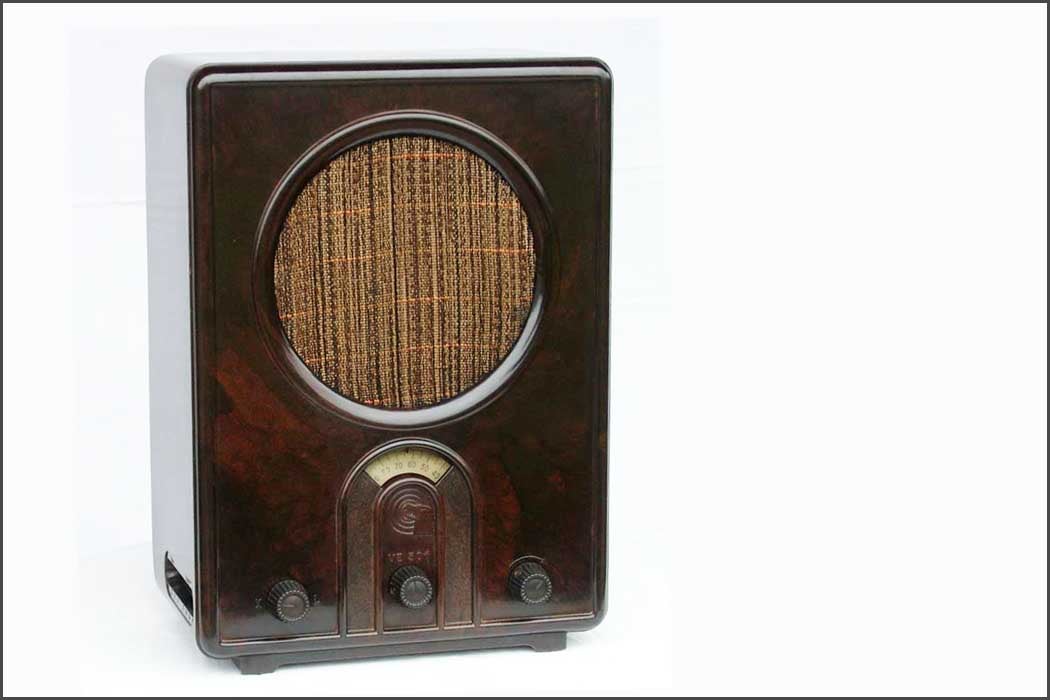The first Volksempfänger, an affordable and extremely popular radio, was introduced in 1933, the year Adolf Hitler was appointed chancellor of Germany. This was no coincidence.
In the 1930s, everyone wanted a radio. The still-new invention brought news, music, dramas, and comedy right into the home. Propaganda Minister Joseph Goebbels saw its potential to transmit Nazi messages into the daily lives of Germans. The only hurdle was producing and disseminating the devices on a mass scale. Under Goebbels’s direction the Volksempfänger, or “people’s receiver,” was born. “Even workers could afford the much cheaper new Volksempfänger and [later model] Kleinempfänger,” writes historian Adelheid von Saldern in the Journal of Modern History. “Step by step, radio emerged in the villages as electrification made rapid progress.”
A 1936 poster depicts a seemingly infinite crowd congregating around an oversized Volksempfänger, with text declaring: “All Germany hears the Führer with the People’s Radio.” In a Rijksmuseum Bulletin from 2011, curators Ludo van Halem and Harm Stevens describe one acquired by the Amsterdam museum. Made from Bakelite (an early low-cost, durable plastic), cardboard, and cloth, it is basic but functional. There is only one small adornment: “The national arms in the form of an eagle and swastika on either side of the tuner unmistakably identifies this modern means of communication as part of the Nazi state’s advanced propaganda machine.”
Until 1939, each Volksempfänger was priced at just 76 Reichsmarks, far below other commercial models. Radios were one of many budget volk—or “people”—products subsidized by the Third Reich, along with the Volkskühlschrank (people’s refrigerator) and Volkswagen (people’s car). “They emphasized consumer-oriented programming as a means to build consensus among the German people and distract them from the sacrifices and the destruction being conducted in their name,” states historian Andrew Stuart Bergerson in the German Studies Review, adding that the Nazis also took control of radio organizations and programming in the 1930s. “In the same stroke, industrialists profited from the high volume of sales, low-income consumers were given access to this new media, and the Nazi regime was given more direct access to the Volk.”
The fact that the Volksempfänger was a propaganda machine was never hidden, but because it was cheap, and could play music along with Hitler’s speeches, most people bought one anyway. As historian Eric Rentschler cites in the New German Critique, “By 1941 65% of German households owned a ‘people’s receiver’ [Volksempfänger].” Although they were designed to tune in only to local stations, it was possible to get international transmissions like the BBC in the evening hours. Listening to these “enemy” stations became a crime punishable by death during World War II.
The Volksempfänger recalls the how the Third Reich eliminated the freedom of press, and replaced it with propaganda that infiltrated every facet of daily life. Although mass communication has now expanded beyond the radio to include television and social media, it’s still important to be aware of who controls the medium and dominates its messages.







